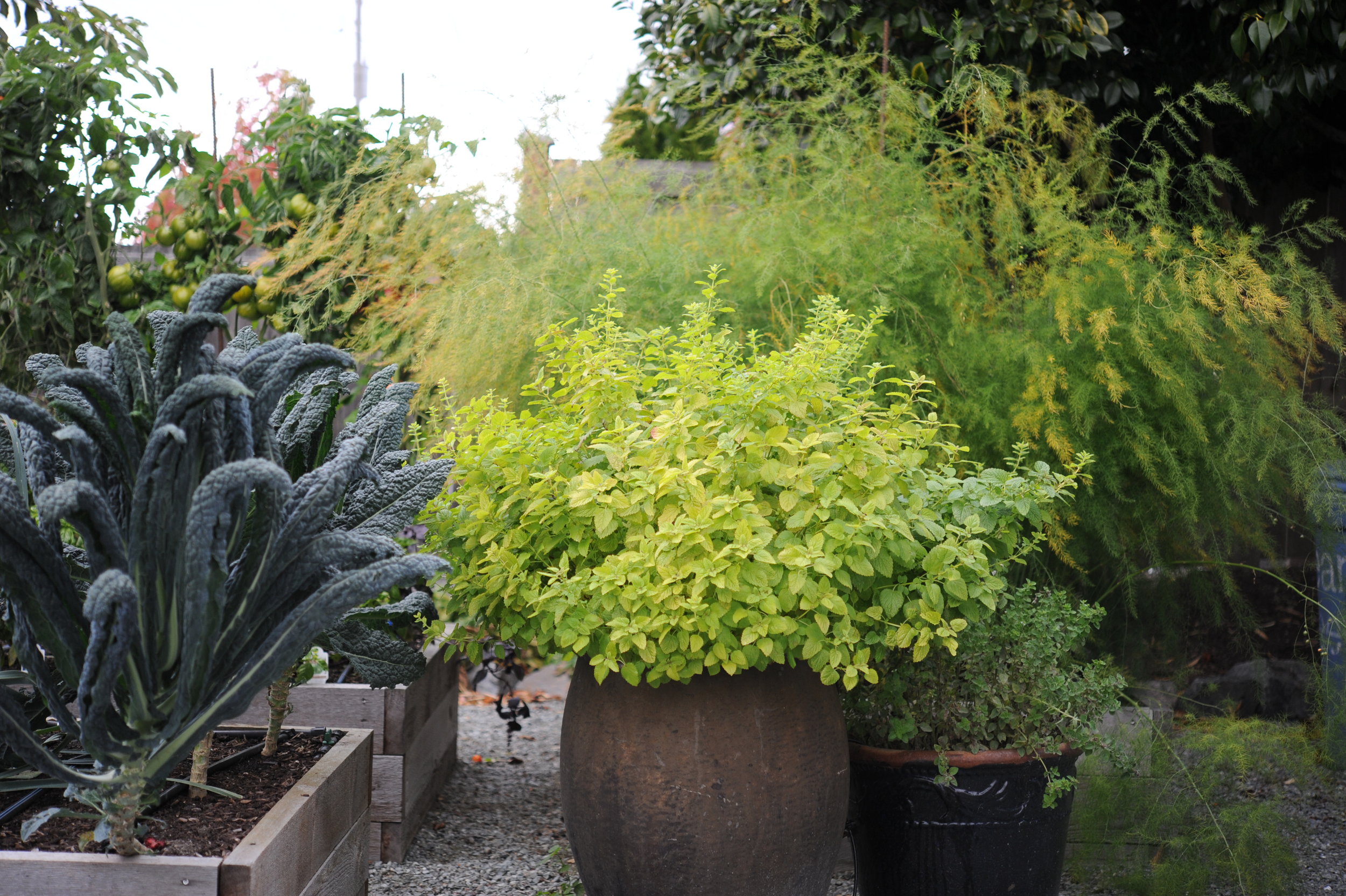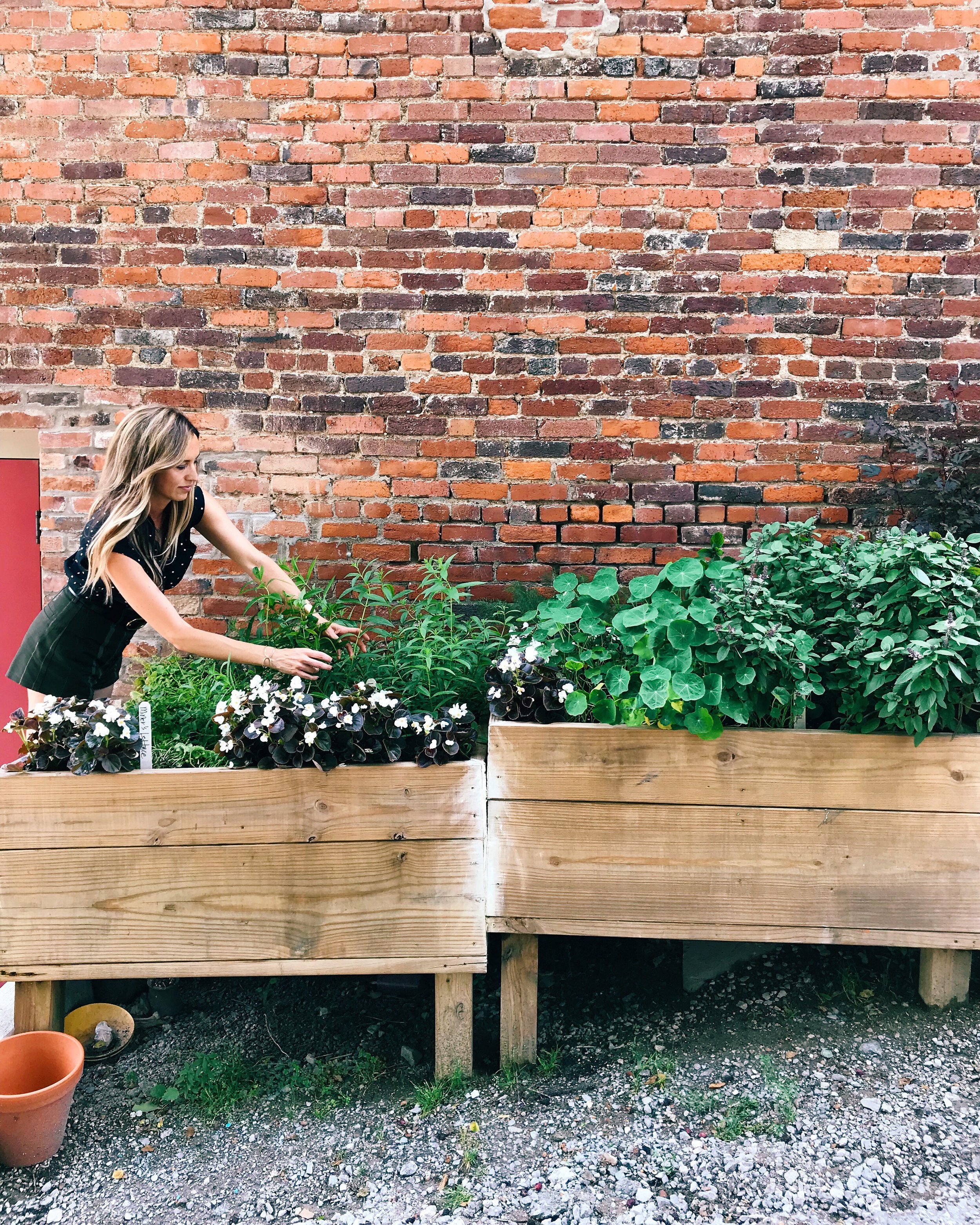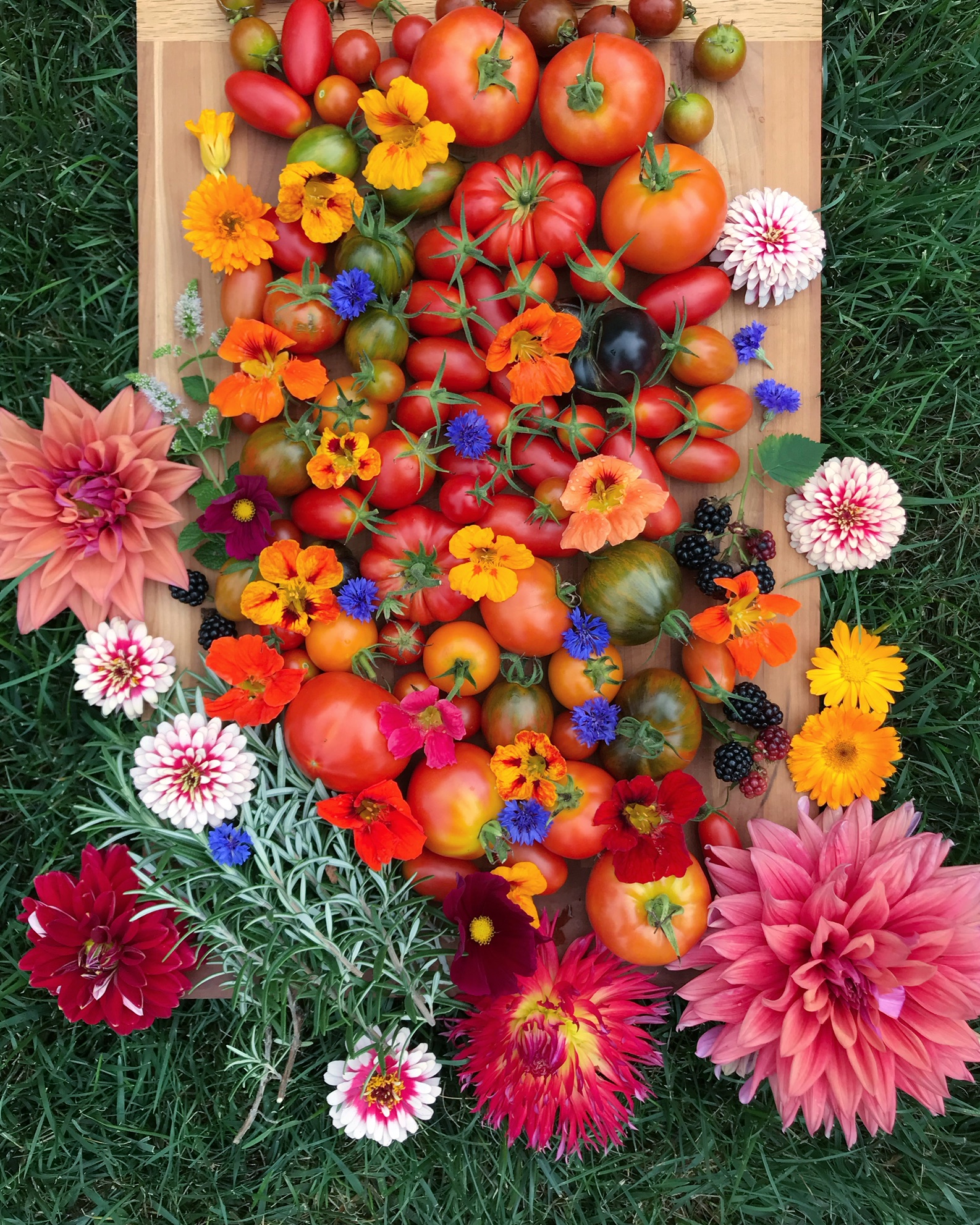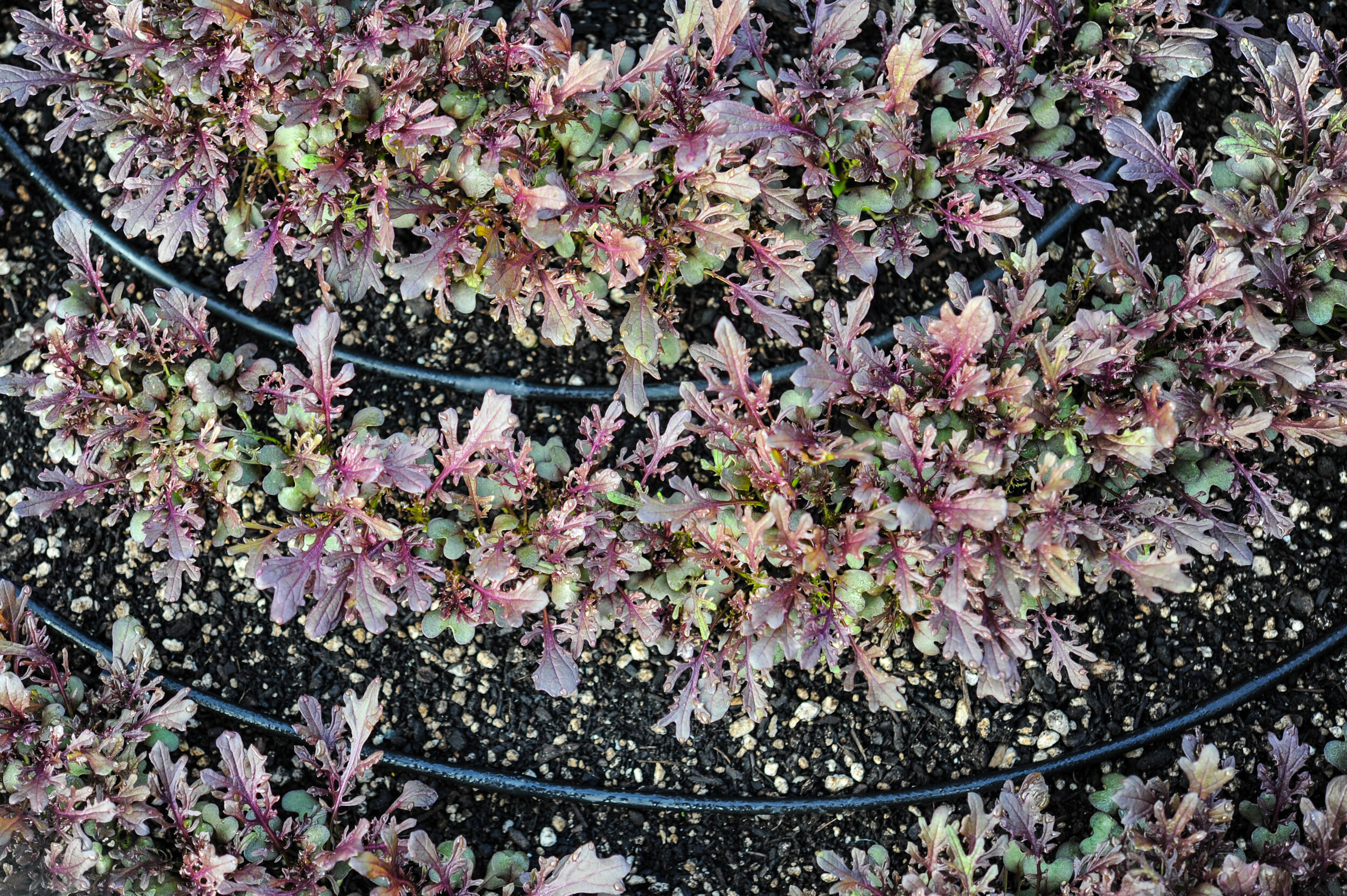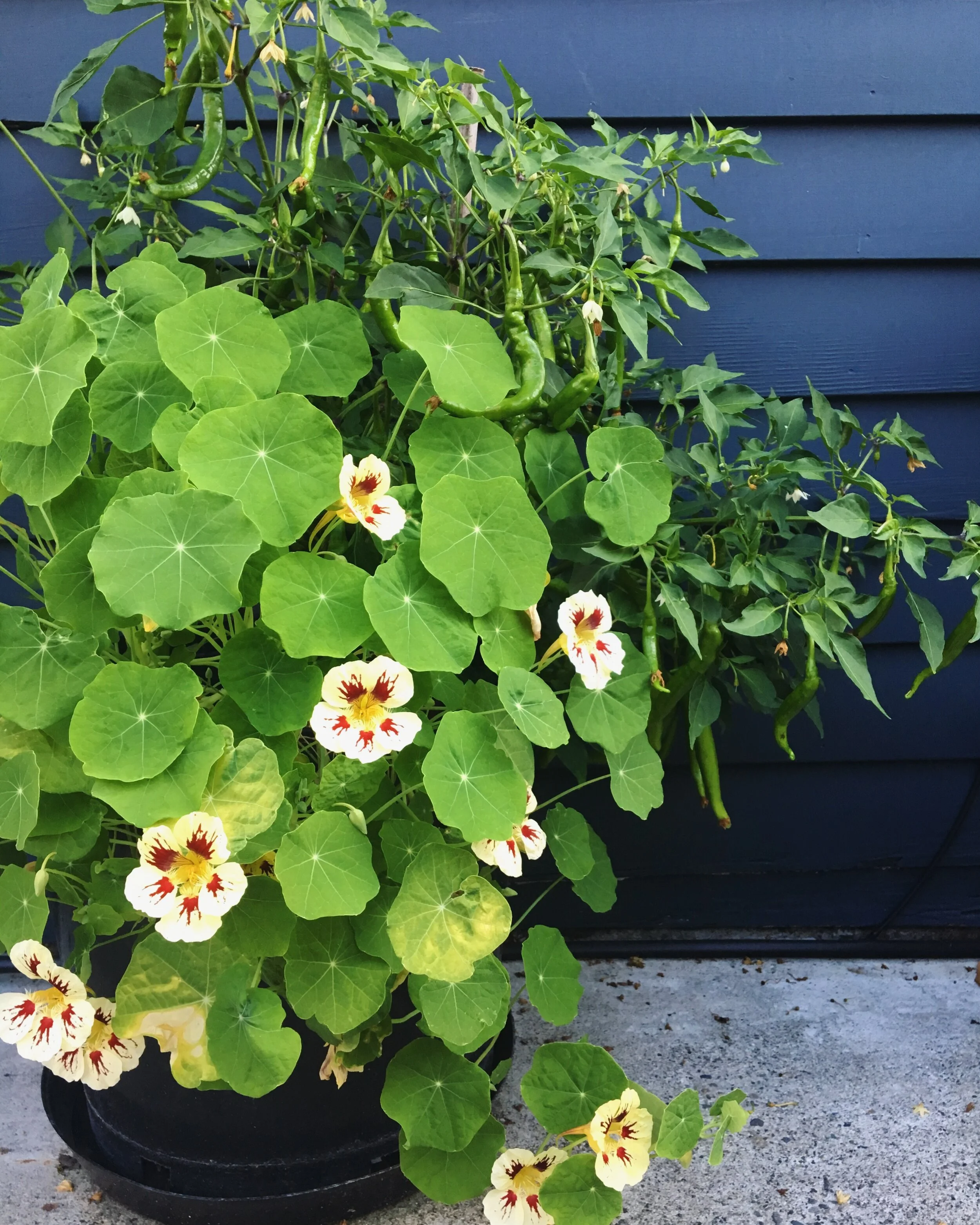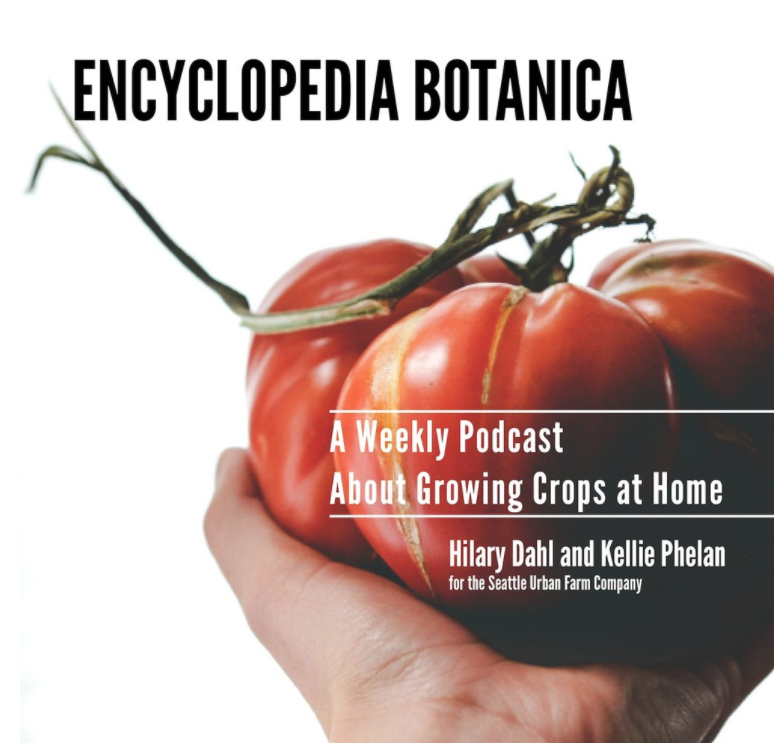In this episode, Sara and Hilary talk about container gardening. Much of Sara’s work is focused on utilizing unused balcony, patio and rooftop space in very urban environments, so this episode focuses on the unique set of needs and challenges that comes along with growing in more unconventional garden space.
HOW TO LISTEN:
Subscribe in iTunes , Stitcher, or any of your favorite podcast players to have new episodes sent directly to your device.
Listen right now in your browser by clicking above.
Choose the right size container for the crop you’re growing!
Left to right: Cilantro seeded into a 2 gallon pot, oregano thriving year after year in a 10 gallon pot, and direct-seed salad greens growing in a 5 gallon pot.
SHOW NOTES + TERMS:
Siting your garden:
When creating a vegetable garden of any size, it is importing to choose the right location. Small gardens can be placed in most any site including a deck, patio, driveway, front yard, rooftop or backyard. Three things to consider when looking for the best possible spot for your garden:
You MUST have sun: The most important thing that should dictate your garden’s location is the site’s exposure to direct sunlight. Nearly every fruit and vegetable plant will benefit from getting as much sunlight as possible. It is essential that your garden receives at least 6 hours of sunlight at the height of summer.
Accessibility: Set yourself up for success by setting up your garden so that it’s easy to get to and work in. In a perfect setting, the garden will be highly visible from the house so you see it every day and don’t forget to check up on it!
Consistent watering is key: Aim to place your garden near a water source or a location that is easy to bring water to. Look for your existing outdoor water spigot (check to make sure they work) and figure out the easiest way to deliver water to the garden. You may simply want to use a watering can, or to drag a hose over to the garden and leave it sitting nearby for ease of use. If you are super eager, you can set up a simple timed drip irrigation system for the garden off of the nearest hose bib.
Weight: Saturated potting soil weights around 50lbs/cubic foot. That means that a 4x8 foot raised bed would weigh around 1,600lbs if saturated! Be sure you’re working on a patio, deck or rooftop that can support that weight! When in doubt, consult an engineer.
Wind: If growing in an exposed area, be sure to consider how the wind might effect your garden.
Container material:
Things to consider when purchasing containers or building a bed for the garden:
Not all containers are created equal: It is essential that the soil in your garden stays consistently moist without being too wet or too dry. Some containers dry out more quickly than others. In particular, unglazed ceramic like terracotta can wick moisture out of the soil, necessitating more frequent watering.
Drainage: Some containers are simply designed with undersized drainage holes (or occasionally no holes at all) which can impede or prevent proper water drainage. Consider adding to or expanding the drainage holes in this situation before you set up the garden. If you are building a bed, make sure water can drain freely.
Size: Be sure to choose an appropriate sized pot or container for the plant you’re growing!
Sara’s favorite type of container: Glowpear Self Watering Container
Soil:
Soil depth is crucial: In a small garden, giving plants all the space they want can be challenging. Since you might be planting crops closer together than normal, having containers or beds with deep soil can help tremendously. The soil can’t be too deep, but a minimum of 8” is recommended. Crops will grow much better in 12” or 18” of soil.
Fill the bed or container with the right type of soil: Make sure you read the label! Some potting soils are designed for specific plant types such as cacti or orchids. You want a blend that is suitable for indoor/outdoor vegetable growing. Examine the ingredients listed on the bag. Good vegetable growing soil may have ingredients like chicken manure, peat moss, perlite, kelp meal and worm castings. Avoid potting soils that contain anhydrous ammonium nitrate or phosphoric acid.
Nutrients:
Add organic fertilizers: Even if potting soil contains some organic fertilizers, you will want to add more when planting vegetables. Lack of fertilizer is a very common reason why people have limited success growing vegetables in pots or small garden beds. We recommend adding organic fertilizers to all vegetable plants but this is especially important when it comes to plants that are growing in containers.
All vegetables will benefit from an application of balanced organic fertilizer when planted. As a baseline we recommend ½ cup of balanced organic fertilizer per 5 gallon pot before planting.
A dry fertilizer made up of many different components is called “balanced” or “all-purpose” fertilizer .Ingredients can vary but the nutrient breakdown will show approximately equal amounts of nitrogen (N), phosphorus (P), and potassium (K). Fertilizers with the nutrient breakdowns of 5-5-5, 3-4-4, or 3-2-2 can all be considered balanced.
Photos of Verdura garden projects by Sara Gasbarra
Like what you hear? Please share our podcast with a friend. Subscribe on iTunes or your favorite podcast player so you never miss a beat. And we'd really appreciate you showing us some love by leaving a rating and review on iTunes.
Have a topic you'd like see us dig in to? Leave us a note in the comment section below or #EBpodcast on Instagram and Twitter!
More about this weeks guest expert:
SARA GASBARRA is the founder and “lead garden girl” of Verdura, a full-service garden design company that cultivates culinary gardens for chefs, restaurants and hotels. She specializes in creating a season-long garden plan specifically tailored to the needs of a restaurant kitchen, sourcing unique and rare varieties of plants and vegetables, organic growing practices, custom designed irrigation systems, and urban farming in unconventional spaces.
Website: saragasbarra.com
Instagram: @saragasbarra
About the Host:
Hello, I’m Hilary Dahl. Outside of this podcast, my job is to help beginning and experienced growers create beautiful and productive gardens. I have the unique experience of working in on a wide range of projects, from small backyard garden plots to multi-acre vegetable farms. I also work in my own garden every day when I get home. This podcast is an opportunity to discuss seasonal garden topics and share the the joy of growing your own food.



